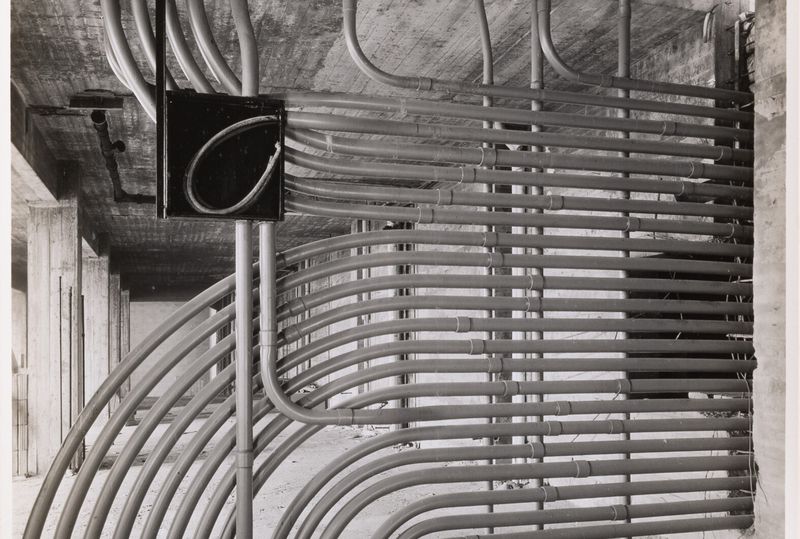The recognition of the manifold meanings and architectural mediations of light, which are becoming only more salient in our era of ecological crises, is common to both the CCA and the Window Research Institute. This emergent ecological reality is creating new practices, designs, and other social and material manifestations of architectural design that are above, below, and between; atmospheric, underground, and attentive to increasingly damaged landscapes all around us. Whether through increased average temperatures, more prevalent drought patterns, or sea level rise, light on this damaged planet is materially responsive to our human-impacted ecosystem. Apertures condense and make palpable this source of light and the need to question its root causes.
This affinity has led to our working with the WRI to jointly provide conditions for deep inquiries into the phenomenon of light. This collaboration represents a new model of fellowship for the CCA; whereas our institution observes an ever-expanding array of architectural subjects, the WRI holds a specific focus on light and windows, in their technological, cultural, and societal dimensions.
The third and final iteration of the CCA-WRI Research Fellowship Program Above/Below/Between: Light on a Damaged Planet continued to seek to understand architecture’s varied relationships to the changing material constitution of the light spectrum. In 2024 we welcomed three CCA-WRI Fellows turning their attention to the third element in the diffusion of light across our solar societies: between, and the everyday conditions that permeate how light shapes and is shaped by the built environment.
The “between” names a specific set of phenomena that become apparent between the atmosphere and land, ones that reflect the Earth’s condition as a solar-dependent environment. These include, for example, the increasing levels of air pollution across the globe, and how this is becoming a major concern for everyday human activities in towns and cities. The between contains the chemical aftereffects of carbon combustion, industrial production, and forest fires. Air pollution thus becomes a phenomenon that generates a range of mitigation practices, from investments in public transit to green industrial technologies more broadly.
Similarly, the between is mediated by the role windows play as apertures through which social, ecological, and political thresholds are navigated across geographic and climatic conditions.
The CCA-WRI Research Fellowship Program sought expansive and theoretically ambitious approaches to the ‘between’ that can make out how it is a condition that moves through and connects the scale of the built environment through shared, inhabitable phenomena including air pollution indexes; political and social resistance to the growth of public transit investment; or hurricanes and other major weather events that reconfigure the boundaries between waterways and places of human inhabitation. This final iteration of the program placed particular emphasis on defining, exploring, and projecting how the “between” can be a ‘solar landscape’ determined by the sun as, equally, an energy resource, a source of existential heat threat, and an ecological threshold to the planet’s climatic conditions.
In line with this, we welcomed more metaphorical and conceptual approaches to the “between” that serve as a bridge between spatial and temporal conditions that interpolate questions of adaptive reuse, interstitial ecologies, and historiographical questions related to the periodization of environmental phenomena in relation to the temporal regimes of the built environment. Researchers could engage with a range of materials held by the CCA, including work related to early solar design, particularly that undertaken by architect Douglas Kelbaugh; the oeuvre of Italian architect and artist Gianni Pettena, with a focus on projects that have a recuperative relationship to the environment; and/or projects realized by landscape architect Cornelia Hahn Oberlander that forecast a future with higher levels of air and other forms of pollution.
While 2024 Fellows could focus on the “between” as an intertwined and mobile site of transit, contamination, flowing ecologies, and apertures as political thresholds, as in the previous two iterations of the fellowship program we welcomed applications that address a range of topics, particularly those that take the theme of damaged light and solarity as a social condition more broadly in new directions:
• Air pollution, determinants of health, and the built/unbuilt environment
• Transit-oriented urbanisms (in relation to density, climate, real estate speculation, etc)
• Borderless ecologies
• Global-warming related weather events and their impacts on the built/unbuilt environment
• The politicization of windows and their materiality
• Solar design, particularly as a material
• Light as a form of social capital
• Solar landscapes, whether dry, arid, or desert
• Luminescence as a historical, geographical, and social process
